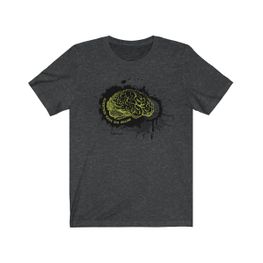Cancer Immunotherapy Applied to Parkinson's Disease
Parkinson’s disease is a chronic brain disorder that leads to abnormal brain functions and can affect the nervous system. As a result, patients with Parkinson’s have issues with pain, movement, sleep, and mental health. Common symptoms include tremors, painful muscle contractions, stiffness, loss of balance, slow movement, reduced coordination, difficulty speaking, and others. Unfortunately, there is no cure for Parkinson’s and symptoms worsen over time. However, there are therapies that regulate symptoms to slow disease progression and improve quality of life.
Treatments to manage Parkinson’s disease (PD) symptoms include medications that target depression, tremors, pain, and physical movement. Most often medications increase the levels of dopamine in the brain, which is a chemical that helps relay information from your brain to the rest of your body. However, new therapies are being investigated to better control and slow down the progression of PD.
A recent article in Nature Communications, by Dr. Ted Dawson and his team demonstrated that immunotherapy could help improve PD symptoms. Dawson is Director of the Institute for Cell Engineering, and the Leonard and Madlyn Abramson Professor in Neurodegenerative Diseases at Johns Hopkins School of Medicine. Dawson’s work focuses on nitric oxide (NO) in neuronal injuries including PD. He has discovered the mechanism by which NO can kill neurons in a disease context and is a pioneer in the field of PD treatments.
In Dawson’s article, his team focused on an immune checkpoint inhibitor that targets a module on the cell surface called lymphocyte-activation gene (Lag3). Immune checkpoint inhibitors are a type of immunotherapy that activates immune cells to recognize and kill tumors. In the context of cancer, specific immune cells known as T cells, cannot kill the tumor because the molecule Lag3 on its surface is bound which prevents their activation. Checkpoint inhibitors block Lag3 from binding with other cell surface markers to allow activation to occur. While checkpoint inhibitors were initially used to treat cancer, scientists, including Dawson, are applying this therapy to other disease models.
Dawson and others discovered that another cell surface marker, Aplp1, binds to Lag3 and drives PD. Alpha-synuclein is a protein which builds up in PD patients. Interestingly, Aplp1 has been associated with the spread of alpha-synuclein throughout the brain once binding with Lag3. Aplp1 bound to Lag3 allows brain cells to accumulate clumps of alpha-synuclein, which results in cell death promoting PD symptoms. The binding of Aplp1 and Lag3 suggests that by targeting this interaction, PD symptoms could be significantly delayed. This discovery is exciting because Lag3 checkpoint inhibitors is already U.S. Food and Drug Administration (FDA) approved and could feasibly apply to PD patients in combination with other treatments.
To elucidate this mechanism, researchers used animal models lacking Aplp1 or Lag3 or both. They discovered that mice without Aplp1 and Lag3 had 90% reduction of alpha-synuclein absorption. To determine if Lag3 checkpoint blockade had similar effects, mice were treated with anti-Lag3. They found that anti-Lag3 prevented the absorption of alpha-synuclein and significantly slowed PD symptoms. Dawson and others have discovered a mechanism that could significantly improve the quality of life for patients with PD. Not only can this immunotherapy be used for PD, but scientists suggest it could be used for other neurodegenerative disorders. Overall, this research has the potential to move forward into the clinic for PD patients and delay debilitating symptoms.
Article, Nature Communications, Ted Dawson, Institute for Cell Engineering, Johns Hopkins School of Medicine

















































